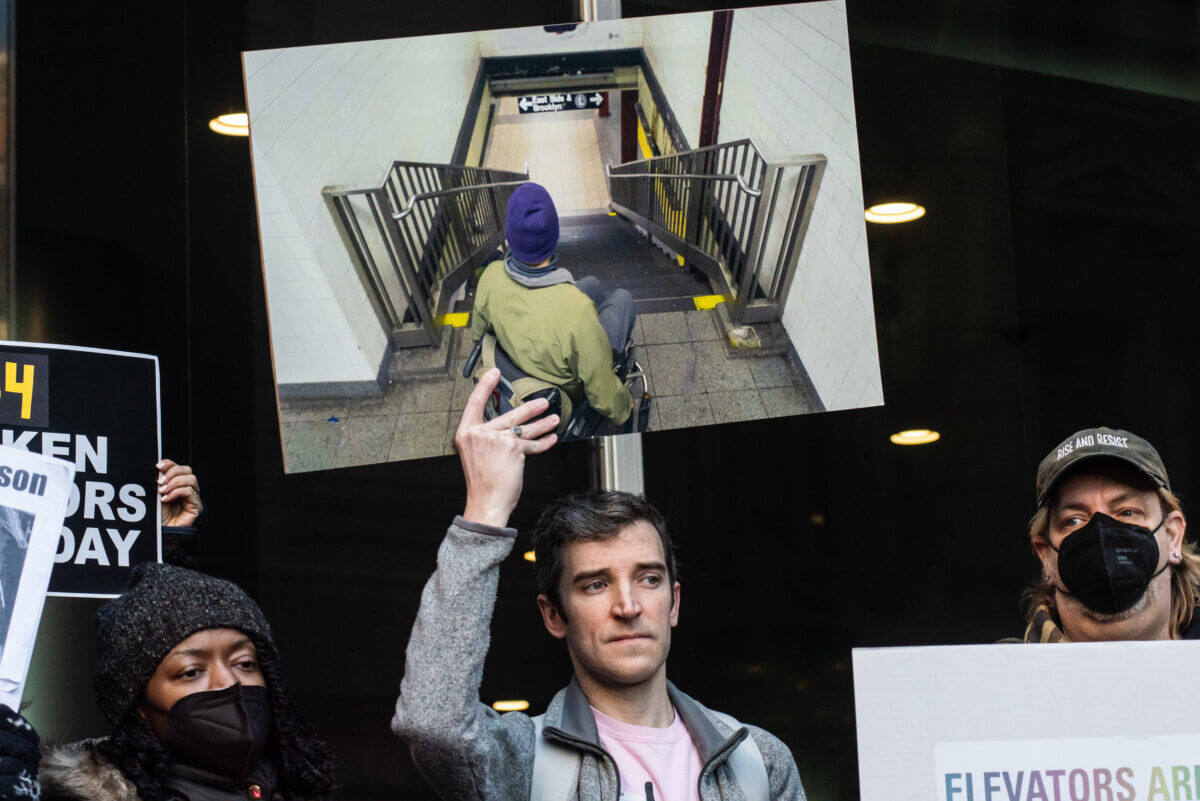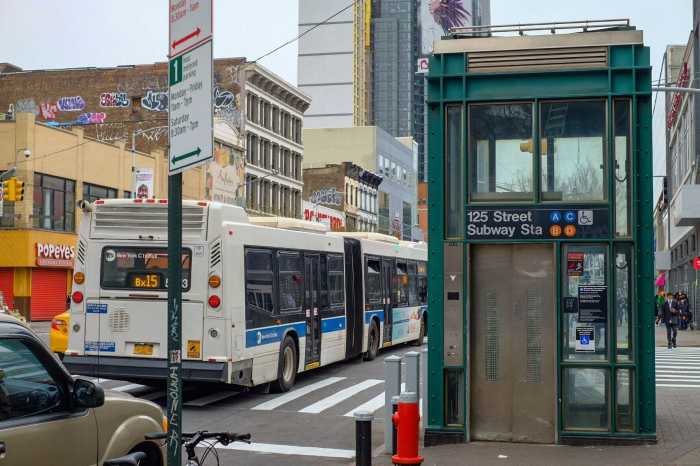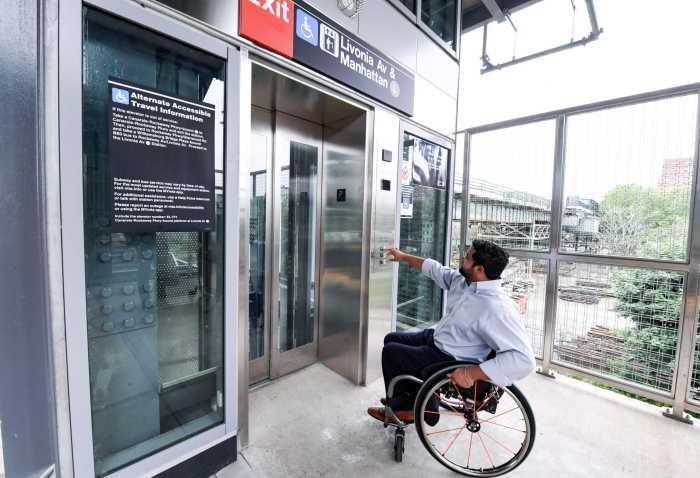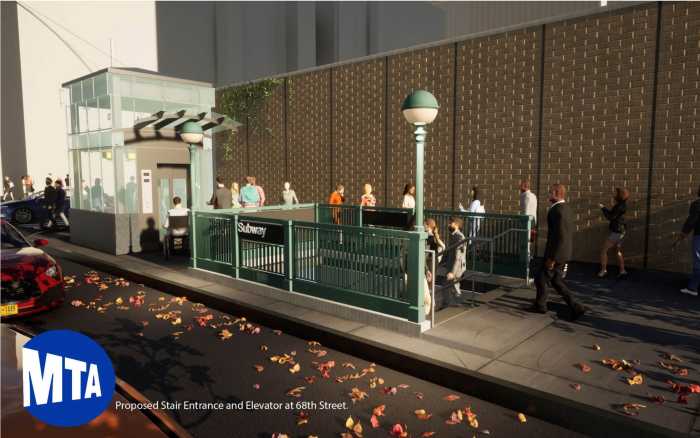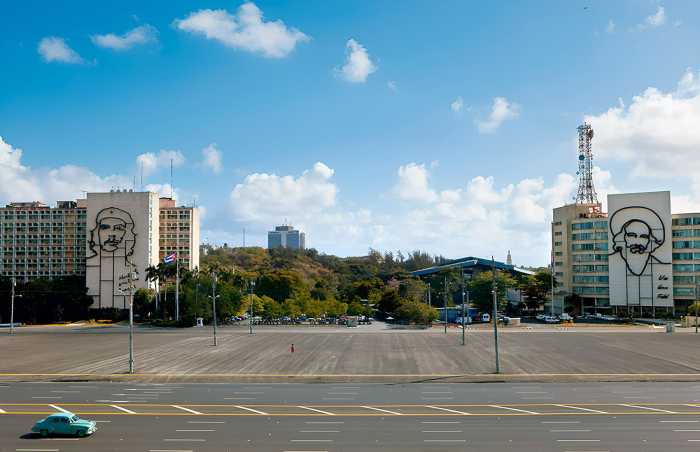Prior to the MTA monthly board meeting Wednesday, the Rise and Resist Elevator Action Group and disability advocates rallied outside MTA Headquarters at 2 Broadway in lower Manhattan, demanding that Governor Hochul and the MTA take immediate action to improve subway elevator reliability, alert riders to breakdowns, and fix elevators promptly.
In 2022, there were 98,969 MTA elevator outages and 9,401 entrapments, and in January 2023, 10% of elevators and 11% of escalators were out of service.
One station, the Clark Street Station in Brooklyn Heights, has seen 35 elevator non-service related outages and 11 entrapments since May 2022 – after the station underwent a $30 million elevator overhaul. An elevator on the elevated 4-line at 170th Street in the Bronx had 13 entrapments.
Currently, only one-quarter of New York City’s 472 subway stations are fully wheelchair-accessible -and the fewest are in low-income areas. Advocates say that, on any given day, around 34 out of the 267 elevators are out of service, making subway travel for wheelchair users, older adults, caregivers with strollers, and workers with deliveries unpredictable and unsafe.
Wheelchair users already have to carefully plan their travels via public transportation, making sure that subway stations are accessible. However, often the MTA website doesn’t alert the riders of any elevator breakdowns, or the MTA updates the elevator status hours later, forcing straphangers to divert to bus travel or take cabs.
Monica Bartley with Disabled in Action said that her last trip on the subway “did not end well.”
She got off the train, just to find out that the elevator was broken, and Bartley had to wait an hour for a train that took her to an accessible station.
“Luckily, that station was ramped to the exit, but I had to take two buses to get home,” Bartley said. “The trip took almost 2 hours, late [in the] evening. The end of which I had a mishap which caused me to be hospitalized for three weeks.”
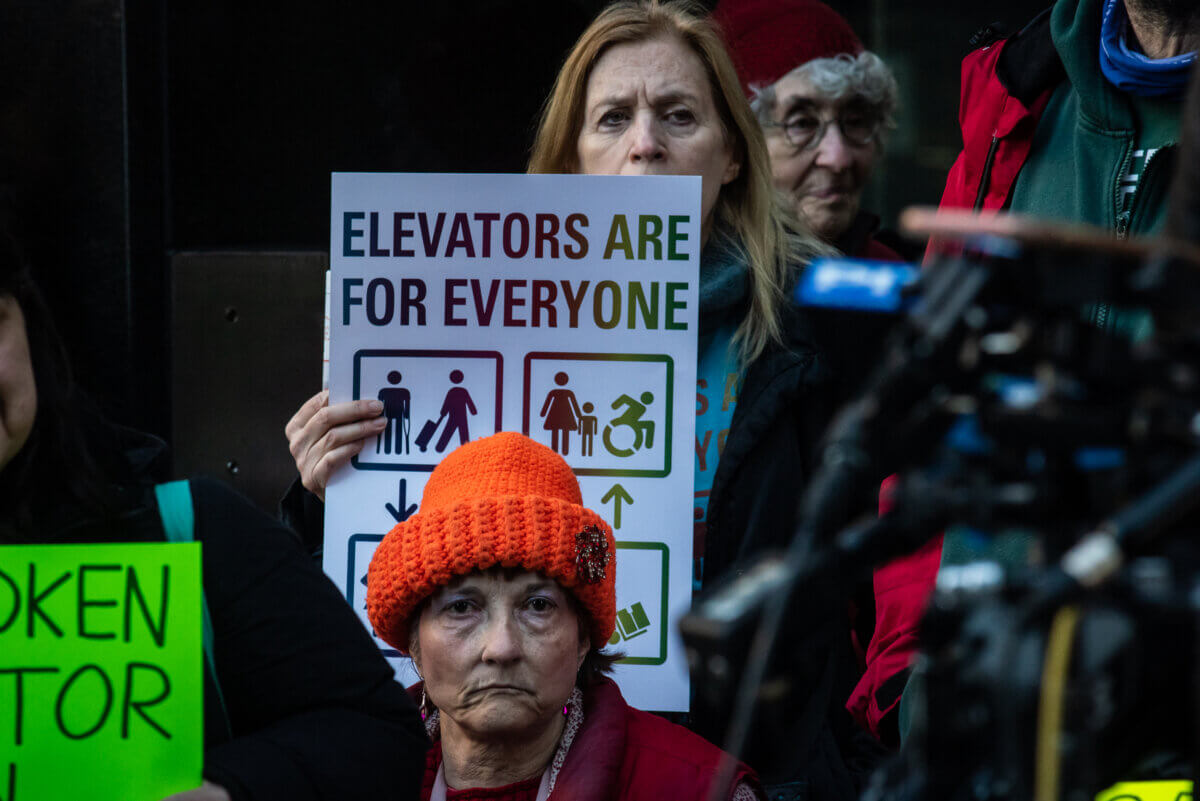
Sasha Blair-Goldensohn, an accessibility activist, applauded the landmark agreement of 2022, when the MTA agreed to a legally enforceable timeline to build elevators in every subway station by 2055.
“But while that happens, it’s important that [elevators] be working,” Goldensohn said. “Because that investment is not going to pay off if it just means more yellow gates.”
Dr. Sharon McLennon-Wier, the executive director of the Center for Independence of the Disabled, said that straphangers deserved safe and clean subway elevators.
“We shouldn’t have to worry that the elevator is going to be broken, and we get stuck in the elevator,” Dr. McLennon-Wier said. “We shouldn’t have to be in an elevator that comprises feces and urine and vomit. We should make sure that the elevators are clean for all New Yorkers.”
Nick Astor with the New York City Comptroller’s Office pointed out that by the time all subway stations in New York City are equipped with elevators he was going to be an “old man.”
Councilmember Erik Bottcher called subway accessibility a “civil rights issue.”
“The ADA is civil rights education, civil rights legislation,” Bottcher said. “So we have to ensure that we hold all our agencies and people in power accountable and make sure that the promises on paper are more than just words on paper, that they are carried out.”
Dustin Jones, who lives in Chelsea and relies on a wheelchair, said that he always felt he could “handle himself” when traveling. But the MTA, with its lack of action and slow response to safety and accessibility, has taken away this freedom, Jones says.
Jones says that the FDNY and NYPD have had to carry him out of subway stations more times than he “even cared to mention” because elevators were out of service.
“There was a time where I almost couldn’t travel anywhere without having the NYPD or the FDNY intervene twice,” Jones said. “And we’re not even talking about small stations. We’re talking about major stations with tons of people.”
Jones shared one incident at Grand Central Station during morning rush hour when he had to be carried out because one of the elevators was broken.
“It was it was weird,” Jones recalled. “It was like they had to stop all the foot traffic. And it was embarrassing, but it was liberating because I felt like the people who were up close, they literally were asking what’s going on. So when I told them what was happening and why it was happening, it really opened up a lot of eyes of how inaccessible the stations are across the city.”

